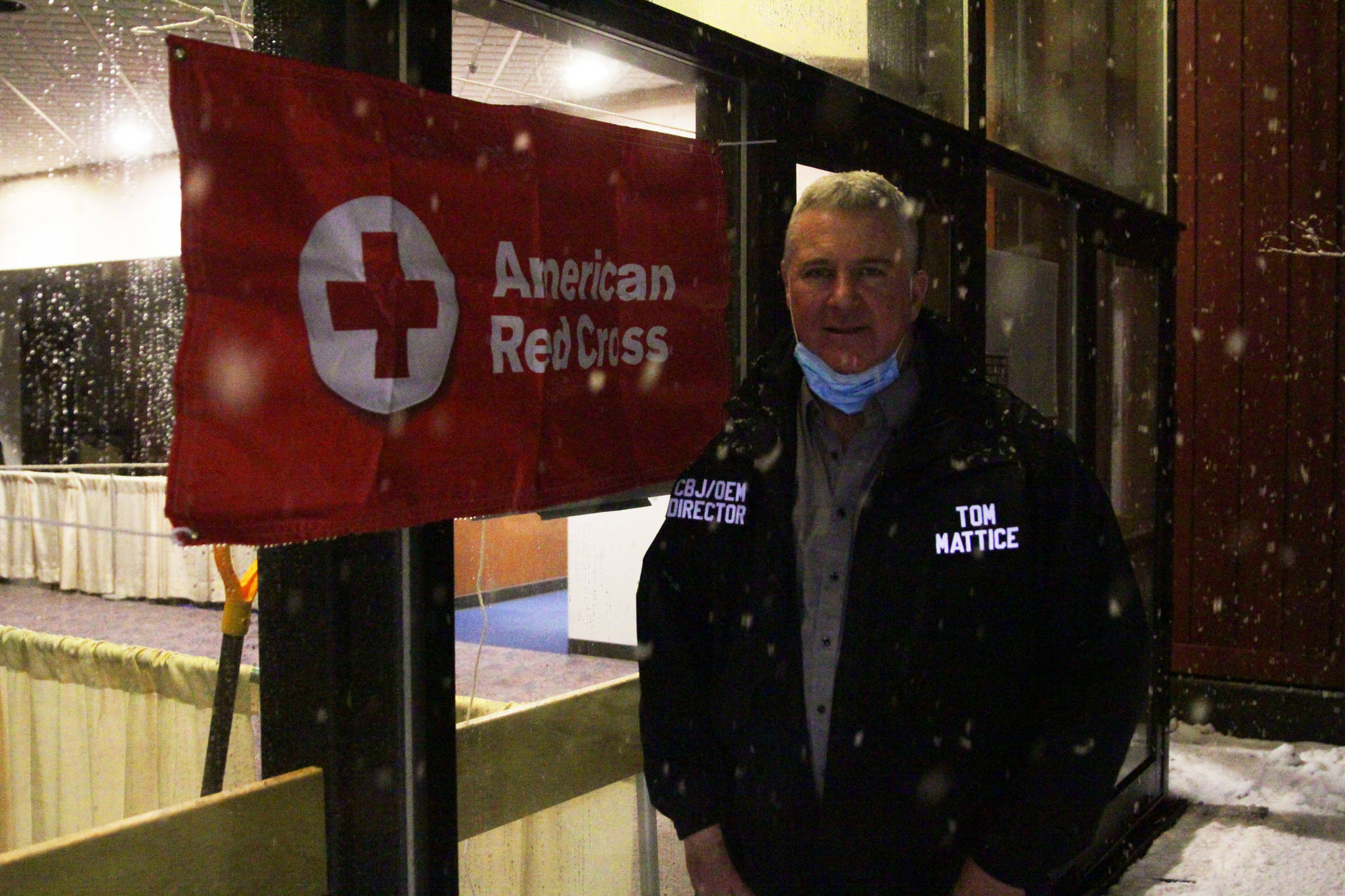This is a developing story.
City and Borough of Juneau’s Urban Avalanche Advisory lowered from extreme on Saturday to high as of Sunday morning, said the city’s emergency program manager in a news release.
The danger persists, said Tom Mattice in an update to the avalanche advisory, but Juneau may make it out unscathed if things continue improving.
“I am of the opinion that if Behrends (Avenue chute) didn’t slide with the 5 degree warming, 2” of moisture, and 1’ of snow yesterday, it will probably start to slowly stabilize today with the falling temps and decreased loading rates,” Mattice said in the release. “So although natural avalanches are still likely, I think we may have dodged a bullet for the time being on the big one.”
A high danger level means avalanche conditions remain “very dangerous,” according to the North American Public Avalanche Danger Scale, natural avalanches remain likely and human-caused avalanches very likely. Spending time in avalanche terrain or avalanche zones is not recommended, according to the scale.
In the past 24 hours, 13 inches of snow fell at the Mount Roberts Tram, according to CBJ’s Urban Avalanche Advisory. More than a foot of snow fell at Eaglecrest.
While things are heading in a positive direction, Mattice said, caution and prudence remain critical to staying safe.
“Dangers remain high, the deep instabilities still exist, Please make your own safety decisions. It’s still a great day to avoid time spent in avalanche terrain and yet by tonight the urban danger should be reduced enough to return to homes,” Mattice said. “Please recognize avalanche forecasting is an imperfect science, there is no certainty that a large avalanche could not occur and yet trends are slowly heading back the right way.”
A more complete forecast is expected later today as snow conditions become better understood, according to the advisory. Mattice recommended staying clear of the Flume Trail and urban avalanche areas during the early part of the day until conditions improve later in the afternoon.
At the center
As wet, heavy snow fell outside, an air of determination was on display at Centennial Hall as masked workers set up the final phase of an evacuation center to support people in the path of the Behrends Avenue avalanche chute.
A total of 39 houses sit in the path of a potential avalanche, and about 20 people were expected to take refuge overnight in Centennial Hall, Mattice said.
Three people and one cat had arrived by 8 p.m. Animal control officers were present to provide free boarding for any pets that came to Centennial Hall with their owners.
This is the first time CBJ has suggested evacuation of the Behrends Avenue corridor area since 2008.
[City recommends evacuation for downtown Juneau neighborhood]
Setting up
Britta Tonnessen, Red Cross disaster program manager, said volunteer coordination started Friday afternoon and on-site setup and had started around 6:30 p.m. Saturday. With the threat of COVID-19 transmission still looming, virus mitigation was in place.
Inside the Sheffield Ballroom, workers set up tents with cots, pillows and blankets. The tents afford privacy and help with virus mitigation, Tonnessen said.
Basic COVID-screening and personal protective equipment were available to workers and those arriving for shelter.
“This is quarantine and isolation sheltering from COVID,” Mattice said.
Tonnessen said that three shifts of volunteers will provide services throughout the evening, overnight and morning shifts. The Salvation Army will offer breakfast vouchers Sunday morning.
The shelter will remain open until the danger has passed.
“Our plan will adjust based on what happens,” she said, noting that the greatest danger is likely to occur during the early morning hours on Sunday.
“If an avalanche hits homes, we’d do a damage assessment and offer different recovery assistance,” she said.
[Juneau area at high risk for ‘historic’ avalanches]
Getting the word out
Mattice said that he walked the Behrends Avenue corridor early Saturday and knocked on doors to let people know of the impending danger.
He talked with more than half of the homeowners, and many were already making preparations to leave the area until the danger passes. Many people reported plans to stay in a hotel or with friends. Several people had already left the area, he said.
“It’s good we went to that level. A few people were not aware of the danger,” he said.
Mattice said that some residents were hesitant to leave.
“A few people said that it would never happen here. So, I shared the history and explained that there’s no way to predict an avalanche’s path. I told them about some of the damage done to houses in the area over the years.”
Mattice said that wet avalanches tend to hook east. In contrast, drier conditions tend to send avalanches to the west. But, he said, there’s no way to predict the direction. He noted that the 1962 avalanche that affected the area went straight down.
“Historically, we’ve seen avalanches to the water,” he said. “This storm is notable with a huge warming at the end of a week with a lot of snow,” he said.
• Contact reporter Dana Zigmund at dana.zigmund@juneauempire.com or 907-308-4891.

